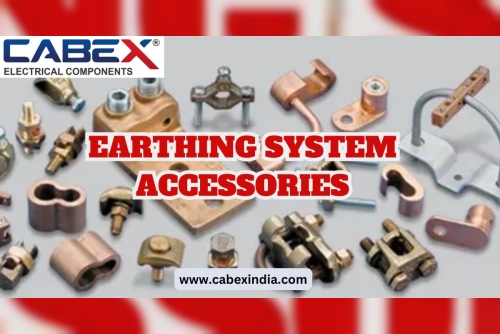An efficient earthing system is essential to the safe operation of any electrical installation. It ensures that the electrical system remains grounded, preventing damage to equipment and reducing the risk of electrical shock. To achieve this level of safety and reliability, various Earthing System Accessories are required. These components are crucial for making the earthing system robust, effective, and compliant with national and international safety standards.
In this article, we will delve into the essential earthing system accessories, their types, functions, and benefits, helping you understand how to choose the best products for your installation.
Understanding Earthing Systems and the Importance of AccessoriesAn earthing system is a network of conductors and components that connect electrical installations to the ground. This system is designed to safely dissipate electrical faults and prevent damage to both the electrical system and people. However, the system’s success depends on the quality and efficiency of the accessories used in it.
Earthing system accessories are the key components that ensure the safe, effective, and durable functioning of the system. These accessories include earth rods, earthing clamps, busbars, and cable lugs, all of which serve distinct purposes to maintain the reliability and safety of the entire earthing network.
Key Components of Earthing System Accessories1. Earth Rods: The Backbone of Your Earthing SystemEarth rods are one of the most critical components of any earthing system. They provide a physical connection between the electrical system and the earth, allowing for the safe dissipation of electrical faults into the ground. Typically made of copper, galvanized steel, or copper-bonded steel, earth rods come in various sizes and designs to suit different soil conditions and electrical needs.
2. Earthing Clamps: Ensuring a Secure ConnectionEarthing clamps are designed to securely connect the earthing conductor to the earth rod and other components of the earthing system. They ensure that the current flows smoothly and safely through the system. Earthing clamps are essential for creating a strong, reliable bond between the earthing conductor and the rods, preventing accidental disconnections and ensuring long-term safety.
Types of Earthing Clamps:
Compression Clamps: These clamps use a mechanical force to compress the conductor and create a secure, permanent connection. Compression clamps are ideal for heavy-duty applications, where a strong, durable bond is needed.Bolt-Type Clamps: These clamps are designed with bolts that allow the easy attachment of conductors to the earth rod. Bolt-type clamps are widely used for general earthing applications.Screw-Type Clamps: Used for smaller, more flexible installations, screw-type clamps provide a quick and easy method of attaching earth conductors to the rod.3. Earthing Plates: Efficient Distribution of Fault CurrentsEarthing plates are an essential component in earthing systems, especially when using flat conductors. These plates are installed in the ground and help to distribute fault currents evenly, reducing the resistance between the earthing system and the ground.
The plates are typically made of copper, galvanized steel, or copper-bonded materials and come in various sizes, depending on the installation’s requirements. They are particularly useful for providing low-resistance grounding in areas with poor soil conductivity.
4. Earth Busbars: The Central Distribution PointAn earth busbar is a conductive bar used to connect multiple earth rods or conductors, providing a central distribution point for the earthing system. These busbars are essential for establishing a network of interconnected earthing points, ensuring that the entire system remains grounded.
Made from high-conductivity materials like copper or aluminum, earth busbars can handle large amounts of electrical current and are designed to ensure that fault currents are evenly distributed. They are used in large-scale commercial or industrial installations, where several earth connections are needed.
Selecting the Right Earthing System AccessoriesChoosing the right earthing accessories depends on several factors, including the type of soil, the electrical system’s power requirements, and the environmental conditions. Here are a few tips to guide your selection process:
Material Selection: Choose high-conductivity materials like copper or aluminum for optimal performance.Compatibility: Ensure that the accessories are compatible with the type of earthing system and the size of your cables and rods.Environmental Factors: Consider the environmental conditions (e.g., moisture, salt, temperature) when selecting materials that can withstand corrosion.Standards Compliance: Always ensure that the accessories you choose meet industry standards and regulatory requirements for electrical safety.ConclusionAn effective earthing system requires more than just earth rods and conductors—it requires a combination of quality accessories to ensure safety, reliability, and efficiency. By selecting the right earthing accessories, such as earth rods, earthing clamps, busbars, and cable lugs, you ensure that the electrical system remains grounded and safe. Furthermore, these accessories help to prevent damage to your electrical infrastructure, protect people from electrical hazards, and ensure compliance with safety standards.
To ensure your electrical installations are safe and reliable, choose high-quality earthing system accessories that match your specific requirements and environmental conditions.
For more information on premium earthing system accessories, visit Cabex India.












